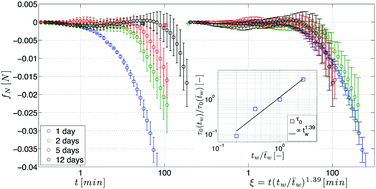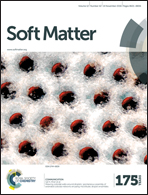Analysis of the aging effects on the viscoelasticity of alginate gels
Abstract
The effect of aging on the mechanical behaviour of ionically cross-linked alginate gels is studied in detail. Relaxation experiments upon both unconfined compression and torsion are performed on samples at different aging times. The elastic moduli of the gel are found to increase with the aging time, whereas the internal (constitutive) mechanism of the relaxation of the solid component of the gel is found to be unaffected by aging. It is demonstrated that the Linear Visco-Elastic Stress/Diffusion Coupling model [D. Larobina, F. Greco, J. Chem. Phys., 2012, 136, 134904], recently developed by two of the present authors, is able to quantitatively reproduce the experimental data for differently aged samples, at early-to-intermediate relaxation times. Moreover, it is shown that the gel always undergoes a spontaneous expulsion of water (syneresis) and some spontaneous deformation for a sufficiently long observation time, even in the absence of any externally imposed strain. The latter phenomenology progressively slows down with increasing of the gel age. By proper time shifting of the late relaxation decays, i.e., by properly defining an “effective time”, master curves can be obtained in all cases, with all data pertaining to differently aged samples collapsing on a single relaxation law for each deformation history. The dependence of the shift factors on the aging time is found to follow a power law behavior, with an exponent of 1.39.


 Please wait while we load your content...
Please wait while we load your content...